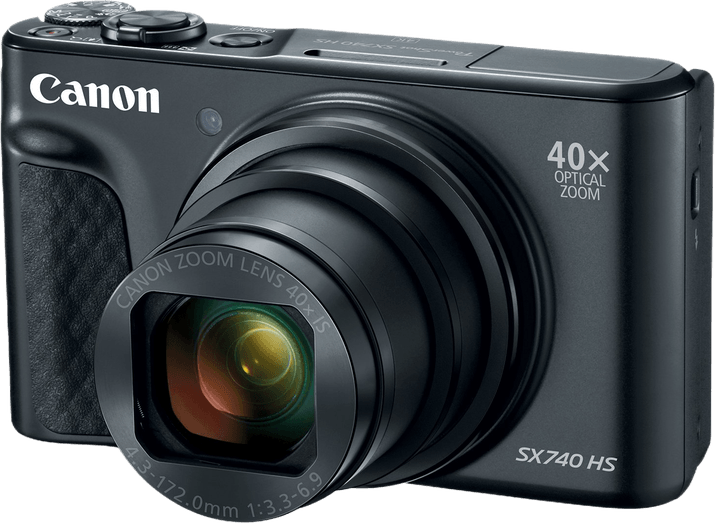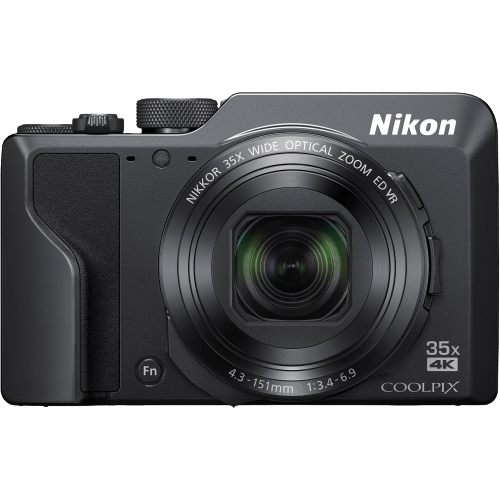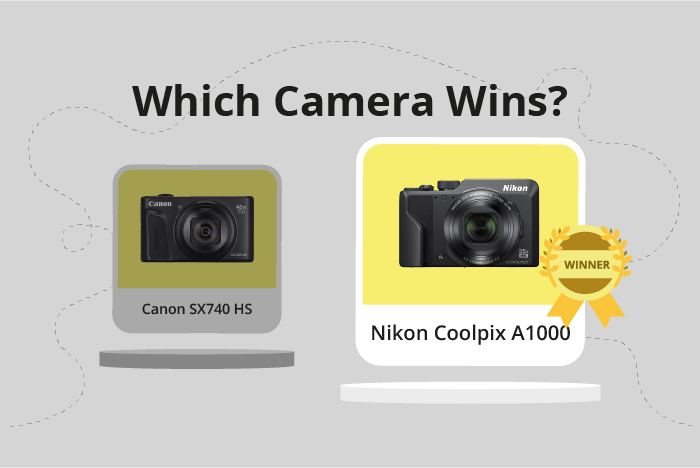Canon PowerShot SX740 HS vs Nikon Coolpix A1000 Comparison
Canon PowerShot SX740 HS

Nikon Coolpix A1000

The Nikon Coolpix A1000 slightly outperforms the Canon PowerShot SX740 HS with a score of 53/100 compared to 52/100. Both cameras are compact and were released in 2018 and 2019, respectively. They share some common specifications, such as camera type and size. However, the Nikon A1000 is slightly larger and heavier, measuring 114 x 72 x 41mm and weighing 330g, while the Canon SX740 HS measures 110 x 64 x 40mm and weighs 299g.
The Nikon A1000’s higher score indicates it has some advantages over the Canon SX740 HS. However, the Canon SX740 HS is lighter and more affordable, with a launch price of $399 compared to the Nikon A1000’s $479. It is important to consider these factors when deciding which camera is the better choice for your needs.
Canon PowerShot SX740 HS vs Nikon Coolpix A1000 Overview and Optics
The Canon PowerShot SX740 HS and the Nikon Coolpix A1000 both receive an optics score of 55/100, indicating that they have similar optical capabilities. They share several specifications, including a shooting speed of 10, a CMOS sensor, a sensor size of 1/2.3″, a fixed lens mount, and image stabilization. These common features make both cameras suitable for general photography purposes.
The Canon PowerShot SX740 HS has an advantage in megapixels with 21 compared to the Nikon Coolpix A1000’s 16 megapixels. This higher megapixel count allows the Canon camera to capture more detailed images, which can be especially beneficial for large prints or heavy cropping. The SX740 HS is also equipped with a Digic 8 processor, which contributes to better image processing and overall performance.
On the other hand, the Nikon Coolpix A1000 has a higher DXOMARK score for the sensor at 72, compared to the Canon’s 58. This indicates that the A1000’s sensor provides better image quality in terms of dynamic range, color depth, and low-light performance. Additionally, the Nikon camera has a 4:3 aspect ratio, which offers a different perspective compared to the Canon’s 3:2 aspect ratio, and can be beneficial for specific photography styles or preferences.
Both cameras have their respective strengths and weaknesses, with the Canon PowerShot SX740 HS having a higher megapixel count and a more advanced processor, while the Nikon Coolpix A1000 has a better sensor score and a different aspect ratio. Ultimately, the choice between these two cameras depends on the photographer’s priorities and specific needs in terms of image quality, performance, and desired aspect ratio.
Canon PowerShot SX740 HS vs Nikon Coolpix A1000 Video Performance
The Canon PowerShot SX740 HS outperforms the Nikon Coolpix A1000 in video capabilities, with a video score of 83/100 compared to the Nikon’s 70/100. Both cameras share some common specifications, such as 4K max video resolution and 3840 x 2160 max video dimensions. Additionally, both cameras have built-in time-lapse functionality.
The Canon PowerShot SX740 HS offers superior video performance, mainly due to its higher max video frame rate of 60fps, compared to the Nikon Coolpix A1000’s 30fps. This higher frame rate allows the Canon to capture smoother and more detailed videos, which is particularly beneficial for fast-paced action scenes or sports recordings. Furthermore, the 13-point difference in video scores highlights the overall better video quality of the Canon PowerShot SX740 HS.
On the other hand, the Nikon Coolpix A1000 has no significant advantage over the Canon PowerShot SX740 HS in terms of video capabilities. Both cameras share the same max video resolution and dimensions, as well as time-lapse functionality. The only difference between the two is the lower max video frame rate of the Nikon Coolpix A1000, which is not an advantage.
To conclude, the Canon PowerShot SX740 HS is the better choice for those seeking high-quality video performance. Its higher video score and max video frame rate of 60fps make it a superior option compared to the Nikon Coolpix A1000. While both cameras share some common video specifications, the Canon PowerShot SX740 HS stands out as the clear winner in this comparison.
Canon PowerShot SX740 HS vs Nikon Coolpix A1000 Features and Benefits
The Canon PowerShot SX740 HS and the Nikon Coolpix A1000 both score 54/100 in features, making it a tie in this comparison. Despite the identical scores, each camera has its own strengths and weaknesses to consider.
Both cameras share several specifications, including a 3-inch screen size, flip screen, absence of GPS, and WIFI connectivity. However, there are differences between the two models that may sway potential buyers.
The Canon PowerShot SX740 HS boasts a slightly higher screen resolution at 922,000 dots compared to the Nikon Coolpix A1000’s 921,000 dots. Additionally, the SX740 HS includes Bluetooth connectivity, providing an extra option for wireless communication and file transfer.
On the other hand, the Nikon Coolpix A1000 offers a touchscreen interface, which can make navigation and camera control more intuitive and user-friendly for some users. This feature is not available on the Canon model. However, the A1000 lacks Bluetooth connectivity, which may be a drawback for those who prefer that method of wireless communication.
Considering the shared specifications and the advantages of each camera, the choice between the Canon PowerShot SX740 HS and the Nikon Coolpix A1000 comes down to individual preferences. If a slightly higher screen resolution and Bluetooth connectivity are priorities, the Canon model may be the better choice. Alternatively, if a touchscreen interface is more important, the Nikon model might be the preferred option. Both cameras offer a solid range of features, and the ultimate decision will depend on the specific needs and preferences of the user.
Canon PowerShot SX740 HS vs Nikon Coolpix A1000 Storage and Battery
The Nikon Coolpix A1000 outperforms the Canon PowerShot SX740 HS in storage and battery with a score of 29/100 compared to the Canon’s 16/100. Both cameras share similarities, such as having one memory card slot and accepting SD, SDHC, and SDXC cards.
The Nikon Coolpix A1000 has a slight edge due to its USB charging capability, which the Canon PowerShot SX740 HS lacks. This feature makes the Nikon more convenient for on-the-go charging. However, the Canon PowerShot SX740 HS does have a slightly longer battery life, with 265 shots compared to the Nikon’s 250 shots.
While the Nikon Coolpix A1000 leads in overall storage and battery performance, the Canon PowerShot SX740 HS offers a marginally longer battery life. Ultimately, the choice between these two cameras depends on the user’s preference for either USB charging or a slightly longer battery life.
Canon PowerShot SX740 HS vs Nikon Coolpix A1000 – Our Verdict
Are you still undecided about which camera is right for you? Have a look at these popular comparisons that feature the Canon PowerShot SX740 HS or the Nikon Coolpix A1000:

